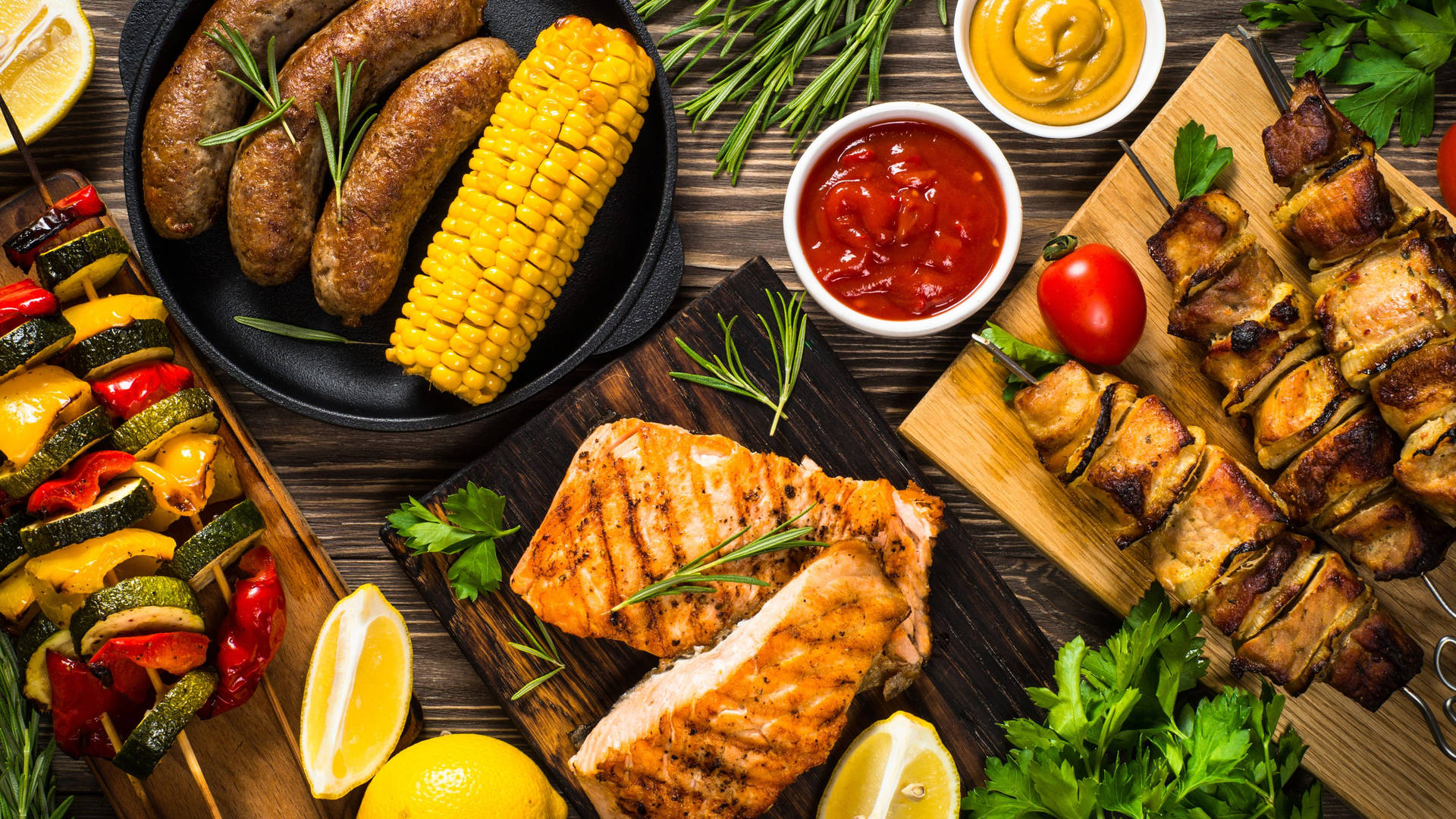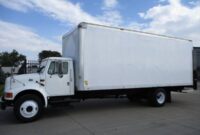Food Truck Prep Table: The Unsung Hero of Mobile Culinary Operations pickup.truckstrend.com
In the vibrant, fast-paced world of food trucks, every inch of space is precious, and every piece of equipment must pull its weight. While the gleaming griddle or the sizzling fryer often steal the spotlight, there’s one indispensable, yet often overlooked, workhorse that forms the very foundation of a food truck’s efficiency and hygiene: the Food Truck Prep Table. More than just a flat surface, it’s the nerve center where raw ingredients transform into culinary masterpieces, where orders are meticulously assembled, and where the rhythm of service truly takes shape.
This comprehensive guide delves into the world of food truck prep tables, exploring their critical role, the essential considerations for selection, different types available, and practical advice to optimize their use. Whether you’re a seasoned food truck operator looking to upgrade or an aspiring entrepreneur mapping out your mobile kitchen, understanding the nuances of your prep table is key to culinary success on wheels.
Food Truck Prep Table: The Unsung Hero of Mobile Culinary Operations
The Heart of the Operation: Understanding Food Truck Prep Tables
A food truck prep table is a dedicated workstation designed specifically for the rigorous demands of commercial food preparation within the confined, mobile environment of a food truck. It serves as the primary surface for chopping vegetables, slicing meats, portioning ingredients, assembling dishes, and even plating finished meals. Its significance extends far beyond mere utility; it’s fundamental to the operational flow, food safety, and overall profitability of a mobile eatery.
Why is a Prep Table Indispensable for Food Trucks?
- Efficiency and Workflow Optimization: In a small kitchen, every movement counts. A well-designed prep table allows for a logical workflow, keeping ingredients, tools, and waste within easy reach. This minimizes unnecessary steps, speeds up service, and reduces staff fatigue, directly impacting customer satisfaction and throughput.
- Hygiene and Food Safety Compliance: Food trucks operate under strict health regulations. A commercial-grade prep table, typically made from non-porous materials like stainless steel, is easy to clean and sanitize, preventing cross-contamination and the growth of harmful bacteria. This is crucial for maintaining food safety standards and passing health inspections.
- Space Maximization: Food truck kitchens are compact. Prep tables often come with integrated storage solutions like undershelves or drawers, maximizing vertical space and providing essential storage for utensils, cutting boards, and frequently used ingredients, keeping the main work surface clear.
- Durability and Longevity: Unlike household tables, commercial prep tables are built to withstand the constant use, temperature fluctuations, and vibrations inherent in a mobile kitchen. Their robust construction ensures they can endure the daily grind, offering a long-term investment.

Key Considerations When Choosing Your Prep Table
Selecting the right prep table is a critical decision that impacts your food truck’s functionality for years to come. Here’s what to look for:
Material Matters: Stainless Steel Reigns Supreme
For food truck prep tables, stainless steel is the undisputed champion. Its non-porous surface, resistance to corrosion, ease of cleaning, and durability make it ideal for commercial food preparation.

- Grades of Stainless Steel:
- 304 Stainless Steel: This is the premium choice for food contact surfaces. It contains higher levels of nickel and chromium, making it extremely resistant to rust, corrosion, and pitting from acids found in food. It’s more expensive but offers superior longevity and hygiene.
- 430 Stainless Steel: A more economical option, 430 stainless steel is also used for commercial equipment. While durable and easy to clean, it has lower corrosion resistance compared to 304, especially in environments exposed to salt, acids, or high humidity. For direct food contact surfaces, 304 is generally preferred or even required.

- Gauge: Refers to the thickness of the steel. A lower gauge number indicates thicker, more durable steel (e.g., 14-gauge is thicker and stronger than 18-gauge). Thicker steel is more resistant to dents and warping, a valuable trait in a mobile environment.
Size and Configuration: Fitting Your Space and Workflow
- Available Space: Measure your food truck’s interior precisely. Consider not just the length and width, but also the height to ensure comfortable working posture.
- Workflow Needs: How many people will be working at the table simultaneously? Do you need separate zones for different tasks (e.g., prep vs. assembly)? This will dictate the required length.
- Depth: A deeper table (e.g., 30 inches vs. 24 inches) provides more workspace but also takes up more valuable floor space. Balance this with your specific needs.
Features and Accessories: Enhancing Functionality
- Undershelves: Essential for maximizing storage. Adjustable undershelves offer flexibility.
- Backsplashes: A raised lip at the back of the table prevents food and liquids from splashing onto the wall, making cleaning easier and improving hygiene.
- Casters (Locking Wheels): While fixed legs offer ultimate stability, locking casters provide mobility, allowing you to move the table for thorough cleaning behind and underneath it, or for reconfiguring your layout. Ensure the casters are heavy-duty and lock securely.
- Integrated Sinks: Some prep tables incorporate a small hand wash or utility sink, which can be a space-saving solution, though it requires plumbing.
- Cutting Board Inserts: Some tables come with built-in slots for removable cutting boards, protecting the stainless steel surface and providing a dedicated cutting area.
- Drawers/Cabinets: For secure storage of smaller tools or ingredients.
NSF Certification: A Mark of Quality and Compliance
Always look for prep tables that are NSF certified. This means the equipment meets stringent public health and safety standards established by NSF International. NSF certification ensures the materials are safe for food contact, the design allows for easy cleaning, and the construction is durable for commercial use. Many health departments require NSF-certified equipment for food truck operation.
Budget: Balancing Cost with Quality
Prep tables range widely in price based on material grade, size, features, and brand. While it’s tempting to opt for the cheapest option, remember that this is a long-term investment. Skimping on quality here can lead to premature wear, difficulty with health inspections, and inefficiencies that cost more in the long run.
Types of Food Truck Prep Tables
While the term "prep table" is broad, several common configurations cater to specific needs:
- Standard Work Tables: The most basic form, offering a flat stainless steel surface with legs and often an undershelf. Ideal for general prep tasks.
- Work Tables with Undershelves: The most common and highly recommended type, providing valuable storage space beneath the main work surface.
- Work Tables with Sinks: These integrate a small sink, often used as a hand-wash station or for quick rinsing, saving valuable counter space.
- Refrigerated Prep Tables (Sandwich/Salad Prep Units): While primarily refrigeration units, they feature a refrigerated top section with cut-outs for ingredient pans, covered by a hinged lid, and a large cutting board surface. These are multi-functional, combining cold storage with a dedicated prep area, essential for operations dealing with cold ingredients like sandwiches, salads, or tacos.
- Portable/Folding Prep Tables: Lighter, often aluminum or thinner stainless steel, these can be set up outside the truck for events or used for overflow prep. They offer flexibility but are less robust for daily, heavy-duty use inside the truck.
Optimizing Your Prep Table for Peak Performance
Once you’ve chosen your prep table, optimizing its use is key to maximizing efficiency and maintaining a pristine mobile kitchen.
- Strategic Layout and Workflow: Position your prep table logically within your food truck’s layout. It should be easily accessible from your ingredient storage (refrigerators, dry storage) and in close proximity to your cooking equipment (griddle, fryers) and plating area. Design a "flow" that minimizes steps from raw ingredient to finished product.
- Organize for Efficiency: Keep frequently used tools (knives, tongs, spatulas) and small equipment (cutting boards, mixing bowls) within arm’s reach. Magnetic knife strips on the wall can save drawer space. Use small containers or bins on the undershelf for organized storage of less-frequently used items.
- Maintain Impeccable Cleanliness: Develop a rigorous cleaning schedule. Wipe down the table surface frequently during service to prevent cross-contamination. At the end of each shift, thoroughly clean and sanitize the entire table using food-safe detergents and sanitizers. Pay attention to corners, edges, and underneath shelves.
- Protect the Surface: While stainless steel is durable, direct cutting can dull knives and scratch the surface over time. Always use cutting boards on your prep table. Heat-resistant mats can protect against hot pots and pans.
- Ergonomics for Staff Comfort: Ensure the table height is appropriate for your staff to work comfortably without stooping or reaching excessively. Proper ergonomics reduces fatigue and the risk of injury. Adjustable legs can be beneficial if multiple staff members of varying heights use the table.
- Maximize Vertical Storage: Don’t just rely on the undershelf. Consider adding wall-mounted shelving above the table for spices, small containers, or frequently accessed non-food items, provided they don’t interfere with your workflow or overhead clearance.
Challenges and Solutions
Operating a food truck presents unique challenges, and your prep table is no exception.
- Limited Space:
- Solution: Opt for custom-sized tables, multi-functional units (like refrigerated prep tables), or tables with integrated sinks and abundant undershelves to maximize every inch. Consider vertical storage solutions.
- Vibration and Movement:
- Solution: Ensure your prep table is securely mounted or has heavy-duty, locking casters. Anti-slip mats underneath equipment placed on the table can prevent movement during transit or sudden stops.
- Temperature Control (for ambient tables):
- Solution: While refrigerated prep tables solve this, for standard prep tables, ensure sensitive ingredients are only out of refrigeration for short periods as per health codes. Use ice baths or small insulated containers for ingredients that need to stay cool during active prep.
- Cleaning in a Small Space:
- Solution: Choose tables with seamless construction and rounded corners for easier cleaning. If possible, opt for tables with casters so they can be pulled away from walls for thorough access.
Food Truck Prep Table Price Guide
The cost of a food truck prep table varies significantly based on material grade, size, features, and brand. This table provides estimated price ranges.
| Type of Table | Material (Grade) | Size Range (Length x Depth) | Key Features | Estimated Price Range (USD) |
|---|---|---|---|---|
| Basic Work Table | 430 SS / 18 Gauge | 36"x24" – 72"x30" | Flat top, adjustable undershelf | $150 – $450 |
| Commercial Work Table | 304 SS / 16-14 Gauge | 48"x24" – 96"x30" | Flat top, adjustable undershelf, often with backsplash | $400 – $900 |
| Work Table with Sink | 304 SS / 16 Gauge | 48"x24" – 72"x30" | Integrated single/double sink, undershelf, backsplash | $700 – $1,500 |
| Refrigerated Prep Table | 304 SS / 16 Gauge | 48"x30" – 72"x36" | Refrigerated top (pans included), cutting board, under-counter refrigeration (1-3 doors) | $1,500 – $4,500+ |
| Portable/Folding Table | Aluminum / Thinner SS | 36"x24" – 60"x24" | Lightweight, collapsible legs, easy transport | $100 – $300 |
| Custom Stainless Steel Table | 304 SS / 14-16 Gauge | Variable | Built to specific dimensions/features, integrated elements | $800 – $3,000+ |
Note: Prices are estimates and can vary based on brand, supplier, specific features, and market conditions.
Frequently Asked Questions (FAQ)
Q: What’s the best material for a food truck prep table?
A: 304-grade stainless steel is highly recommended for food contact surfaces due to its superior corrosion resistance, durability, and ease of cleaning, which are crucial for hygiene and longevity in a food truck.
Q: How do I clean my prep table effectively?
A: Daily cleaning with warm soapy water and a soft cloth is essential. Follow with a food-grade sanitizer solution (e.g., quaternary ammonium compounds or diluted bleach) according to manufacturer instructions. Always air dry or use a clean, dry cloth.
Q: Is NSF certification necessary for my prep table?
A: While not always legally mandated in every jurisdiction, NSF certification is highly recommended and often required by local health departments. It ensures the equipment meets stringent public health and safety standards, making health inspections smoother and ensuring safe food preparation.
Q: Can I use a regular kitchen table in my food truck?
A: No, it is strongly not recommended. Household kitchen tables are not built to withstand commercial use, lack the durability and hygiene properties of commercial stainless steel, and will not meet health department regulations.
Q: How do I choose the right size prep table for my truck?
A: First, meticulously measure the available space in your truck. Then, consider your workflow: how many people will be working, what tasks will be performed, and how much ingredient/tool space you need. Balance these needs with the physical constraints of your vehicle.
Q: Are casters (wheels) a good idea for a food truck prep table?
A: Yes, locking casters are highly beneficial. They allow you to easily move the table for thorough cleaning behind and underneath it, and can facilitate layout changes. Ensure the casters are heavy-duty and lock securely to prevent accidental movement during operation.
Conclusion
The food truck prep table, while perhaps not as glamorous as other kitchen equipment, is undeniably the backbone of any successful mobile culinary operation. It dictates the pace of service, ensures food safety, and maximizes precious space. By carefully considering materials, size, features, and ongoing maintenance, food truck owners can select and optimize a prep table that serves as a durable, hygienic, and efficient foundation for their culinary ambitions on the road. Investing wisely in this essential piece of equipment is not just about compliance; it’s about setting the stage for smooth operations, delicious food, and lasting success in the competitive food truck industry.



